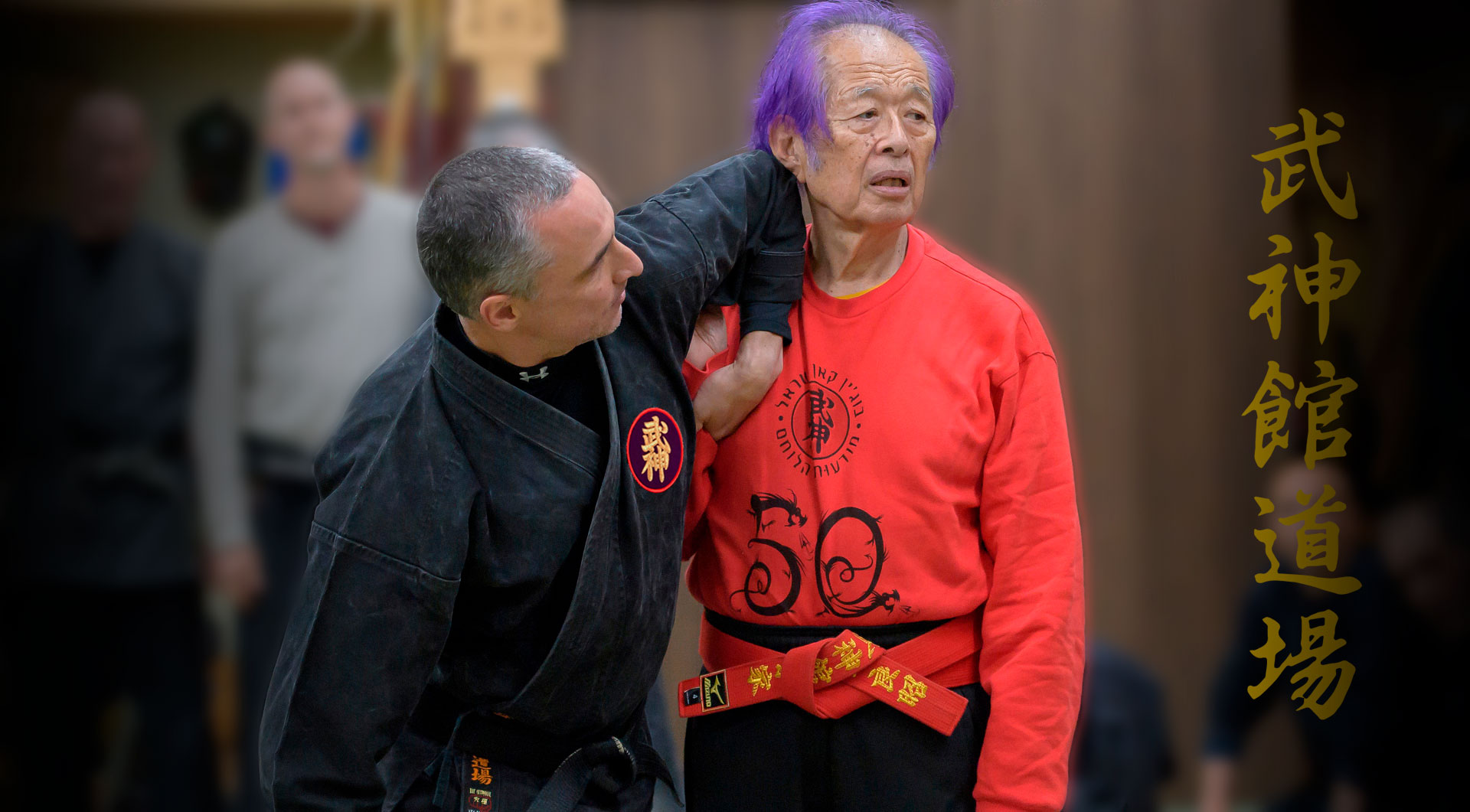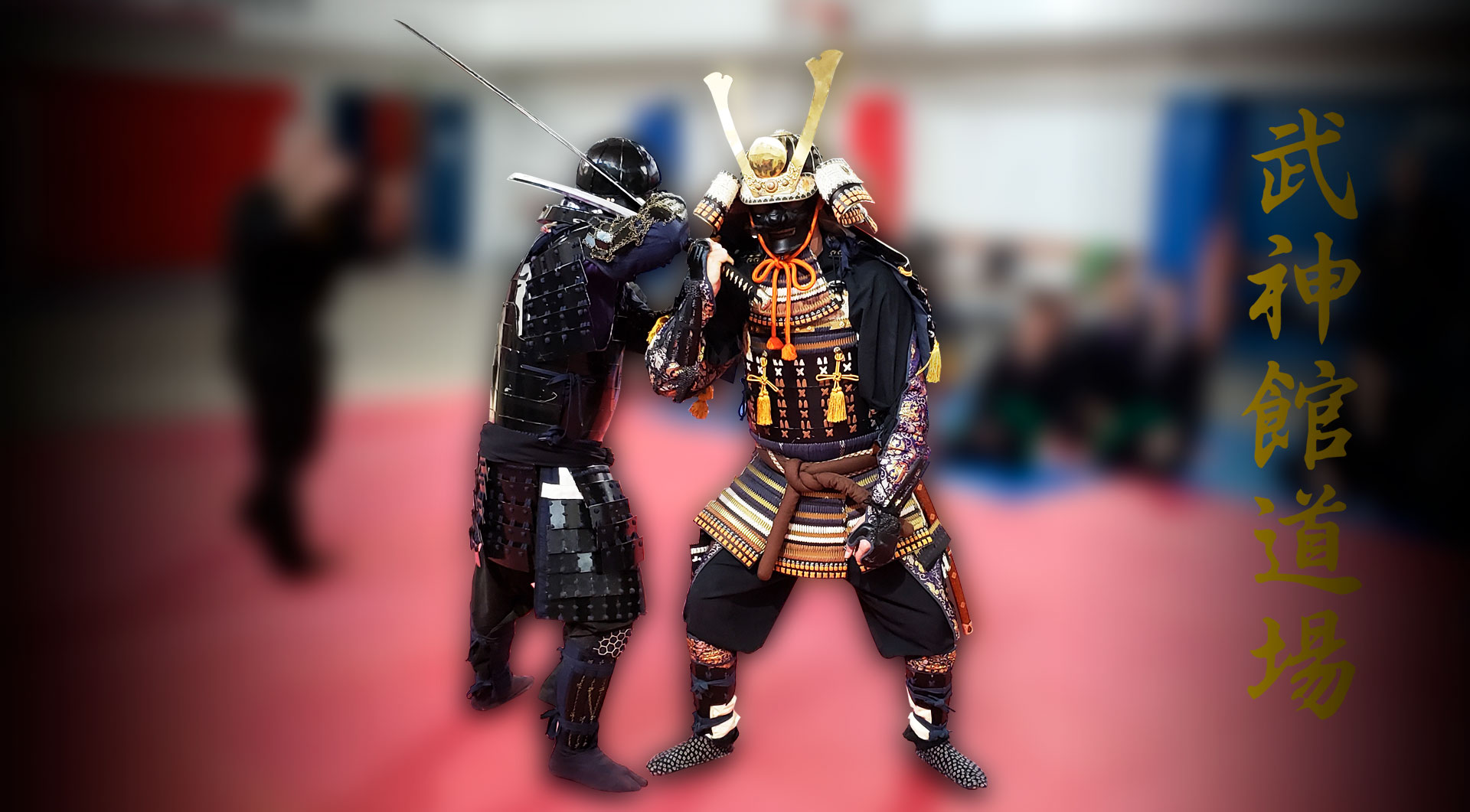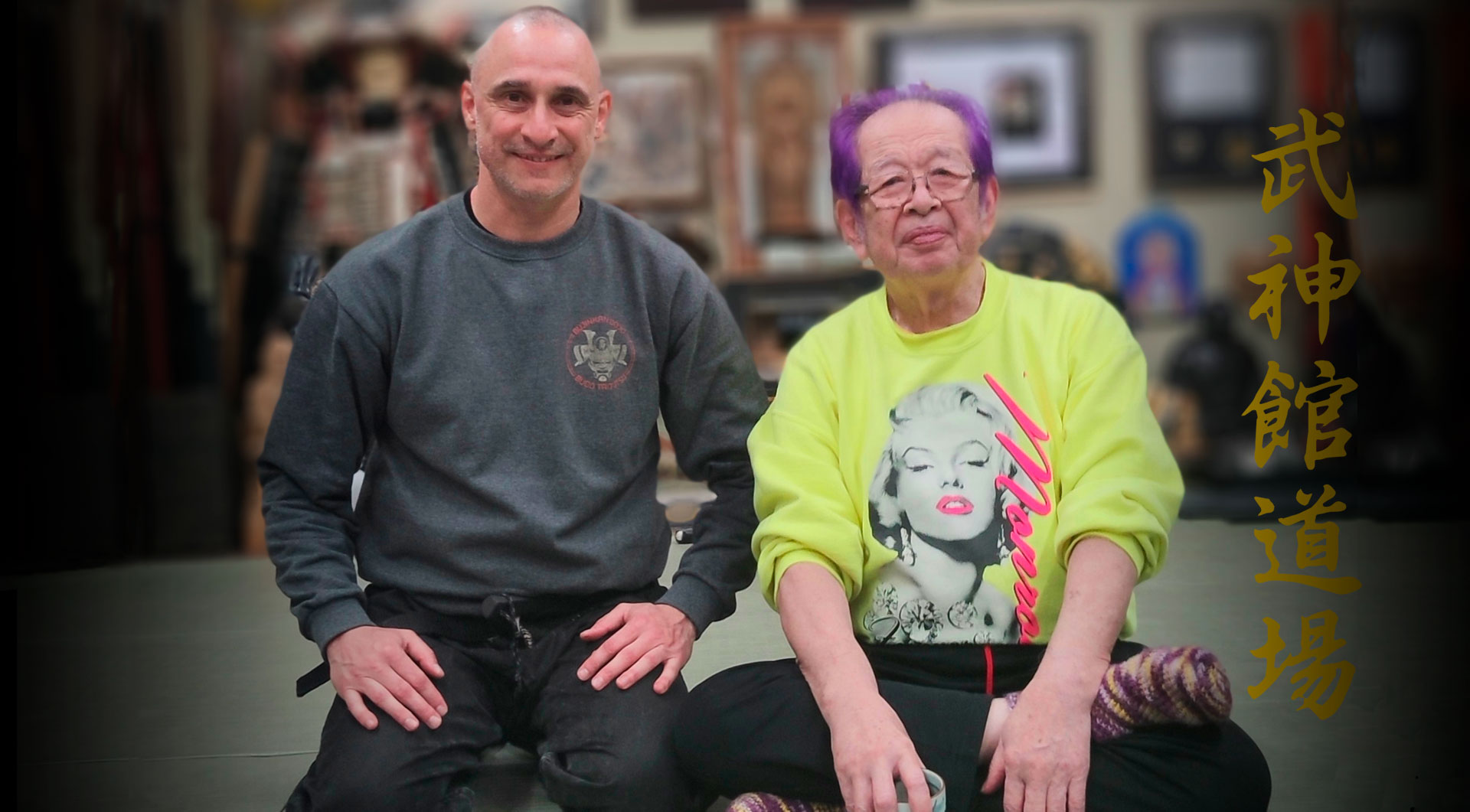Bujinkan Dojo, is the School of 9 traditional Japanese martial arts, led by Dr. Masaaki Hatsumi Soke.
Bujinkan Fudoryu Dojo, is the school of Marcelo Fabián Ferraro Dai Shihan, in Buenos Aires, Argentina, and is formed by students and instructors around the world, with the purpose of training, transmitting, and preserving the teachings and legacy of Bujinkan Dojo in benefit of all humanity.
Info
WHAT IS BUJINKAN DOJO?
Bujinkan Dojo Budo Taijutsu – Ninjutsu, is a school that integrates nine Japanese ryu ha (ancient martial arts schools). These schools were developed in various methodologies of fighting, strategies and philosophies, from the first times of war to the present.
The arts of the Ninja, developed and evolved after long studies and sacrifices, not only in the art of war, but also, in the art of the warrior’s internal development (spiritual growth). A Ninja motto says: “Harmony is of essential importance to the warrior.”
Currently, Bujinkan Dojo, led by Dr. Masaaki Hatsumi, promotes its training for the development of self-protection, care of nature and cultural continuity of the martial traditions of Japan
NINJA ESSENCE
The Ninja aspired to unify the technique with the spirit and become “uncommon” within the common people. Actually, the Ninjutsu reveals to us how difficult it is to truly be a “good” human being.
The essence of Ninjutsu, or of being a Shinobi, focused on divine providence and what the earth or heaven could offer. This gave rise to Sakki Jutsu or Sacchi Ho, methods to anticipate or predict. The Ninja knows the laws of nature and therefore is prepared to feel changes in the dynamics of nature and the world around it. Many of these techniques are known as Tenmon.
This allowed the Ninja to be in complete association with the outside world and therefore in this state they could react immediately to any event, therefore nothing would surprise him. This is the essence of Ninjutsu: an individual with the sense of survival.
BIO: TOSHITSUGU TAKAMATSU
MOKO NO TORA “MONGOLIAN TIGER”
Toshitsugu Takamatsu was born in Kobe on March 10, 1889 (Meiji 22). Their ancestors were members of a clan of the Takeo forests, located in the mountainous areas of the former province of Iga (current prefecture of Mie).
He began his training at age nine on the initiative of his father, who thought that Takamatsu was very shy, and in school was called “cry baby.” His first teacher was his grandfather, Shinryuken Masamitsu Toda, who initiated him in Shinden Fudo Ryu. Usually Toda Sensei had a helper who taught beginners, but Toda Sensei taught Takamatsu directly. During the lessons, Takamatsu was thrown back and forth for a year. After that time Toda Sensei began to teach him waza.
At the age of 10 he had the opportunity not to be called “cry baby” at school anymore. This happened in a Sumo class, when his teacher asked him to go up to the ring (Dohyo) to participate in a fight. Takamatsu easily knocked down 8 or 9 opponents. After this episode people started treating him with respect.
After learning Shinden Fudo Ryu, he studied Koto Ryu Koppo Jutsu. His incredible ability made him master these two styles when he was only thirteen years old. He later began studying Togakure Ryu Ninjutsu, as well as Takagi Yoshin Ryu in the Tadafusa Dojo Misuta Yoshitaro.
His weight at age 12 had increased to 124 lbs (55 kg) due to his vigorous workouts. In the Dojo they called him “Kotora” (little tiger); There he found good friends although he had some confrontations with practitioners from other schools, since at that time it was customary to try the techniques of one school against another.
An episode that can be referred to took place when two Musashi Bugeisha went to the Dojo of Toda Sensei. So tells the story known as Kotora and Kanzaki.
BIO: MASAAKI HATSUMI
Hatsumi Yoshiaki, born on December 2, 1931 in Noda (just north of Tokyo), later changed his first name to Masaaki. He was introduced to Kendo by his father when he was 7 years old. He also studied Judo and Karate. In high school he was a gymnast, boxer and captain of the football team. He also studied dance, which he believes helped him in footwork in his Budo training. In his university years he continued practicing boxing and Judo, belonged to Judo and Drama clubs and studied theatrical arts. During his studies in medical school, he received the 4th. Dan of Judo. He was asked to teach Judo to the American soldiers at the base of Yokota’s army, which he agreed to. He was in his twenties and discovered that great Americans seemed to have natural size and ability and saw that they learned in months what the typical Japanese took years. He began to question his training … How good is a martial art if a bigger or stronger person could easily defeat you? Hatsumi began to look for a true warrior tradition. He paid a Kobudo teacher 300,000 Yen a month to come to the Dojo in his house to teach him Kobujutsu Juuhappan (the 18 categories of Kobujutsu). He completed his training in three years.
When he was 26 he met Takamatsu Toshitsugu in the city of Kashiwabara, west of the Iga region of Japan. He traveled through Honshu Island every weekend for 15 years to study with his teacher. The train journey took more than half a day from his house in Noda to Takamatsu’s house in Kashiwabara. Takamatsu wrote a poem to hatsumi that says …
“In the days of the Tenei Era there was a great master of Koppo.
He was calm and peaceful like spring flowers.
But he was so brave that not even 10,000 enemies could make him show fear.
He could even knock down a wild animal with just one blow. ”
After 15 years of study, Takamatsu Toshitsugu died at the age of 83 at his home in Nara (just west of Osaka) on April 2, 1972. A few years before Takamatsu had already decided that Hatsumi would be the next only heir and “Soke” (head of the family) of …
– Togakure Ryu Ninpo Happo Hiken, 34° Soke
– Gyokko Ryu Kosshijutsu Happo Hiken, 28° Soke
– Kukishinden Ryu Taijutsu Happo Hiken, 28° Soke
– Shindenfudo Ryu Dakentaijutsu Happo Hiken, 26° Soke
– Gyokushin Ryu Ninpo Happo Hiken, 21° Soke
– Koto Ryu Koppojutsu Happo Hiken, 17° Soke
– Takagi Yoshin Ryu Jutaijutsu Happo Hiken, 17° Soke
– Gikan Ryu Koppojutsu Happo Hiken, 15° Soke
– Kumogakure Ryu Ninpo Happo Hiken, 14° Soke
Masaaki Hatsumi gave a seminar to the prince of the Japanese crown on Ninpo (1961). He was also active participant in television scenes, such as in the children’s program “Suteki Na Mama”, he performed in Jiraya, a series also dedicated to children made by Asashi television. He had the role of Yamaji Tetzusan (Jiraya’s father and teacher). He acted as a consultant in the film “Shinobi no Mono” (1962), a film about Ishikawa Goemon and Momochi Sandayu.
He is also director of the Literary Club of Japan, International section.
He was awarded the title of Todo Hanshi (Supreme Master of the Sword Path) by Nakazawa Toshi, president of Zen Todo Renmei (Japanese Sword Federation).
Among many others, he received honorary titles and / or awards from: George Bush (President of the US), Secretary of State for National Heritage (United Kingdom), Hendon Metropolitan Police (London), prize of the Educational and Cultural Committee from the city of Noda, honorary citizen of the Jordan Valley in Israel, Letter of Appreciation from the Australian Prime Minister, Letters of Appreciation from the Pentagon, honorary prize from the Secretary of State for the Intelligence Agency of Spain, birthday postcard of the President Clinton (USA), title of “Knight” in Frankfurt, honorary member of the Arizona Rangers (the only person who is an honorary member of both Rangers: Arizona and Texas), Letters of Appreciation from the Secretary of State for the Environment of USA, letter from Prince Charles, Letters of Appreciation from the FBI, etc …
MARCELO FABIÁN FERRARO DAI SHIHAN
Marcelo Fabián Ferraro was born in Buenos Aires, Argentina, on January 26, 1968. He studied and trained different martial arts since he was 14 years old.
At the end of the 80’s, and after his search for a martial art as a way of life, he began his training at the Bujinkan Dojo school.
From 1992 to the present, he made constant study trips to the International Headquarters (Hombu Dojo) in Noda City, Japan, where he trained and studied with Dr. Masaaki Hatsumi and the main Japanese teachers. Marcelo F. Ferraro, gives numerous classes and seminars in Argentina and abroad, and also prepares and guides the formation of a group of instructors in Argentina and other countries.
Following an intense activity of study, practice and teaching, in 2017 he received directly the appointment of Bujinkan Dojo Dai Shihan, granted by his teacher Dr.Masaaki Hatsumi; continuing the objective of transmitting the teachings and maintaining the legacy of the Bujinkan Dojo school.
Marcelo is also a therapist and professor of natural health therapies, specializing in the therapies of the various methods of traditional Thai massage; ancient therapeutic art and integral health system. He teaches seminars and workshops, and under his attention he carries out the application of these health methods in his health center located in Buenos Aires Argentina.
Where to train?
Our Dojos
Honbu Dojo
Marcelo Fabián Ferraro Dai Shihan
Our Classes
Saturdays: 9:15 to 11:00 am
Instituto Kumazawa
Av. Cabildo 3127 – C.A.B.A
Contact:
Email: marcelo@fudoryu.com.ar
Tel/Whatsapp: 1161248948
BUJINKAN DOJO DIGITAL CLASSROOM
Video series for study and training.
A VIDEO LIBRARY TO TREASURE. FULL OF TRADITION, TECHNIQUES AND ESSENCE OF BUDO. TIMELESS TRAINING EQUIPMENT.
Bujinkan dojo contains vast knowledge passed down from generation to generation.
You can access to all the videos as many times as you want. You do not need prior knowledge.
Send us an email to receive all the information and start accessing all the videos: marcelo@fudoryu.com.ar
9 MARTIAL TRADITIONS
The study of the nine martial traditions of the Bujinkan Dojo Budo Taijutsu, leads us towards different paths. After such a long time, generations of each style have transferred varied knowledge about strategy, martial arts, philosophy, religion, medicine, etc.
Next, the basic principles, both technical and philosophical, will be described for each Ryu-Ha, as well as its origins.
GYOKKO RYU KOSSHIJUTSU
Dr. Masaaki Hatsumi: 28º Soke (successor)
Characteristics: The specialty of this school is Kosshijutsu (attack on muscles), Shitojutsu (use of the five fingers), powerful blockages, distance long, the techniques with many movements and spaces, the use of dislocations and
projections.
Main teachings:
– The warrior’s heart is the most important.
– We must destroy the power of the adversary but not his life.
– Vices dissipate effectiveness.
– Do not teach others without teacher permission.
KOTO RYU KOPPOJUTSU
Dr. Masaaki Hatsumi: 18º Soke (successor)
Technical characteristics: Use of short distances. Powerful, direct and fast techniques, focused on the methods of always breaking the enemy’s balance. During the fight you look at the enemy to the space between the eyebrows, trying to prevent movements from being detected. The steps crossing the legs and techniques in which the foot of the adversary is stepped are very useful in the short distances. In ancient times, training began by hitting on sand, stones and moving large rocks, as a method of conditioning the hands for combat. It should be noted that the fist is the concentration of the body, mind and spirit.
Main teachings:
The eyes are everything.
TAKAGI YOSHIN RYU JUTAIJUTSU
Dr. Masaaki Hatsumi: 17º Soke (successor)
Characteristics: Prevents the opponent from escaping by rolling. This may be because the style developed in indoor training sites. The techniques are applied at close range, with projections, dislocations, strangulations, always preventing the adversary from escaping.
Main teachings:
“A branch is flexible but a tall tree is brittle”
SHINDEN FUDO RYU DAKENTAIJUTSU
Dr. Masaaki Hatsumi: 26º Soke (successor)
Characteristics: One of its most significant features is the recognition of natural style as a defensive posture. The practitioner must visualize a defensive posture and natural movement in his mind.
Main teachings:
– The secret of the school is the principle of nature.
– At the door of Toda Sensei Dojo, there were a series of written rules that every student should observe:
– You must know that patience is only a moment.
– You must walk on a path of righteousness.
– Forget desires and pride.
– Repentance and truth are the rules of nature.
– Get peace in your heart through the understanding of the unalterable heart, from thinking about repentance and truth.
– Focus with faith, be obedient and honest with your parents and turn your path (of study and training) into the path of Bushi (warrior).
KUKISHINDEN RYU HAPPO HIKEN JUTSU
Dr. Masaaki Hatsumi: 26º Soke (successor)
Technical characteristics: It was common for the warriors of Kukishinden Ryu to use armor, so you can see quite heavy movements in their techniques. The attacks were aimed primarily at areas where the armor had no protection. It is said that this school had a large repertoire of weapons, such as the different swords, Katana, Tachi, Kodachi, Rokushaku Bo, Kaginawa, Kusarigama, Daisharin, Bisento, etc.
GIKAN RYU KOPPOJUTSU
Dr. Masaaki Hatsumi: 15º Soke (successor)
Technical features: This school teaches special kicks, fist attacks and projections. It is also characterized by the dynamic use of footwork.
Main teachings:
“The first blow does not come from this side.”
TOGAKURE RYU NINJUTSU
Dr. Masaaki Hatsumi: 34º Soke (successor)
Technical characteristics. The three secrets of this school were:
– Senban Shuriken: Four-pointed throwing star exclusive to this Ryu.
– Shukko: Metal piece with four small hooks that were placed in the hand and held on to the wrist with a piece of leather. It was used to climb and, in many cases, as a defense against attacks.
– Shindake: Small bamboo tube used for breathing when the practitioner was hiding beneath the surface of the water.
In the practice of Taijutsu, combat without weapons, the attacks were directed mainly at the eyes, ears and genitals.
Main teachings:
– Violence must be avoided.
– The sword must be used to achieve peace, protect the country, family and nature.
KUMOGAKURE RYU NINJUTSU
Dr. Masaaki Hatsumi: 14º Soke (successor)
Technical characteristics: Taijutsu is very similar to that used by the warriors of the Togakure Ryu. This school has some characteristic weapons such as the Ippon Sugi Noburi, which consists of a 25 cm long metal tube, with three rows of spikes on the outside and a chain over the middle with a metal hook at each end. Another of these weapons used was the Kamayari, a spear with a hook.
The fundamental feature of this school’s unarmed combat was that they used to jump during combat and use double blows and blocks. In combat, these warriors routinely used arm protections. This explains why, during the fighting, they will use their forearms on many occasions to strike and protect themselves.
GYOKUSHIN RYU NINJUTSU
Dr. Masaaki Hatsumi: 21º Soke (successor)
Technical characteristics: Sutemi projections (sacrificing one’s own balance) seem to be the main technical characteristic of this school. It really is one of the great unknowns in the West. This system focuses more on strategic and tactical aspects.
FREQUENTLY ASKED QUESTIONS
CAN I REGISTER FOR THE CLASSES EVEN IF I KNOW NOTHING?
Of course, we all started without knowing the techniques and it’s always a good time to start training and studying a martial arts.
IS THERE ANY AGE LIMIT TO BEGIN TO TAKE CLASSES?
In the case of adults, there is no age limit. For children we recommend from the age of 6/7 years old.
Since it is not a sport, there is no certain limitation with respect to ages.
WHEN DO THE CLASSES BEGIN?
Classes are taught permanently throughout the year. There is no beginning of classes or a cessation of cycle. You can register at the Bujinkan Dojo at any time of the year.
WHAT ARE THE TRAINING DAYS?
To participate in the classes taught by Marcelo Fabián Ferraro Dai Shihan, we wait for you on Saturdays from 9:30 p.m. to 11:00 p.m., at Av. Cabildo 3127, C.A.B.A.
Also in the Dojos section you can access the different subsidiaries of our school.
HOW IS A CLASS OF BUJINKAN DOJO?
In general, the basic structure of a class is: junan taiso, which consists of a physical preheating with breathing exercises, strengthening and stretching. Then the technical practice begins, which consists on different methods to use the body as a weapon. These techniques range from positions (kamae), ways of rolling and falling (kaiten – ukemi), striking techniques (hokken juropo), vital points (kyusho), projections (nage waza), dislocations (gyaku waza), etc.
DO YOU TRAIN WITH WEAPONS?
Yes, the weapons with which we train in Bujnkan Dojo are a varied range, from sticks of different lengths, swords and blades of various sizes; In addition to studying the typical weapons of the ninja such as: Shukkos, Shinobi Katana, Shuriken, Shaken, Kyoketsu Shoge, etc.
Within the study of the weapons of the Ninjutsu, is the Happo Hiken that contemplates the following weapons: Bo Jutsu, Jo Jutsu and hanbo Jutsu. Senban Nage, Shuriken. Shinobi Katana, Kodachi, Jutte and Tessen. So Jutsu, Naginata Jutsu.
WHAT CLOTHING SHOULD I WEAR TO TAKE MY FIRST CLASS?
Simply come to class in comfortable clothes, such as long gym pants and a shirt.
WHERE IS THE HONBU DOJO?
Our dojo is located in Nuñez, C.A.B.A in Av.Cabildo 3127 ( Inst.Kumazawa). The location is very convenient since many of the buses arrive from anywhere in the city.
Bus Lines: 152-59-184-60-71-314-130-333. There are also subsidiaries in different areas and with different schedules. To see all available dojos you can visit the DOJOS section of this site.




